0 Comments
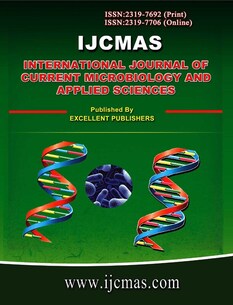 Compost Tea Induced Callus Proliferation and Defense Response in Rice (Oryza sativaL.) Callus Cells International Journal of Current Microbiology and Applied Sciences, 2019 Link Here Fresh tea knowledge coming out of India! Scientists worldwide are recognizing that compost tea does have some extremely beneficial attributes. Tea has been shown to undoubtedly increase growth and fight off pests and disease. Now that tea's efficacy has been settled, inquisitive scientists are starting to ask the whys and hows. A group of scientists from the Department of Plant Biotechnology at the University of Applied Sciences in Bangalore India wanted to see if compost tea stimulated known plant-defense chemicals. They took undifferentiated plant cells, known as callus cells, and put them on a petri dish that had been treated with compost tea. The cells were allow to grow for 15 days. The scientists then looked at the plant cells and determined if, and how much of, the plant defense chemicals were present. (That was a very simplified version of the whats and hows, click the Link Here button above if you want to know the nitty-gritty). And low and behold, the scientists found that the cells treated with compost teas produced more internal plant defense compounds (peroxidase and superoxide dismutase, if you were wondering). Also, the callus cells grew bigger, ending up with a significantly higher dry weight than the non-tea-treated control. Interestingly, some of the callus cells that had been exposed to tea initiated root development. This lead us to think that something in compost tea is analogous to rooting hormones. Further investigation is warranted. Science shows us again that what the old timers have been saying for years, compost tea makes plants stronger and bigger. Tell us your tea-tales in the comment below! 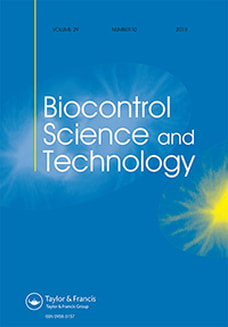 Different carbonic supplements induced changes of microflora in two types of compost teas and biocontrol efficiency against Pythium aphanidermatum May, 2019 Link Here Sugars are known to be microbial food sources and have long been used in farming as a supplement to promote plant growth. In compost tea, Molasses is the most often used sugar source and in known to produce a beneficial, biologically active tea. However, there is a not so sweet side to this story when it comes to disease prevention. Scientists at the Ningxia Normal University in Guyuan, China wanted to look at how compost teas brewed with different microbial food sources (Glucose, Sucrose, Starch, Chitin, Cellulose, & Wheat Straw) would affect damping off of cucumber seedlings caused by Pythium. The scientists used two different types of compost (soy straw/cattle manure, and wheat-straw/chicken manure), and brewed teas 7 teas each (made with the six listed food sources, and one tea as a control with no food source). Then the teas were assessed for: physio-chemical properties, enzyme activity, microbial populations and colony types, in vitro (in the lab) and in vivo (in field) disease suppressive qualities. What was found.... there is a significant amount of diversity in the teas and their respective attributes. From pH, to Water Soluble Carbon, to enzyme activity, to microbial populations, the two compost types and their food sources produces a variety of results, which indicate the complexity of these dynamic concoctions. The most stand out piece of information is that in the greenhouse studies, the teas brewed with Glucose, Sucrose, and Starch were associated with higher incidence rates of damping off. The Chitin, Cellulose, and Wheat Straw teas showed significantly lower rates of the disease. This leads us to believe that compost teas produced with sugars are less effective in controlling the fungal pathogen. At TeaLAB, we generally use Fish Powder as a food source for our teas, and only recommend molasses (sugars) to be used in the last weeks of the growing season. This direction has been based on our own experience, a healthy understanding of the soil food web, and information learned from the farmers and gardeners that share their experiences with us. It is very good to see that there are scientists on the other side of the globe working to better our understanding of the brew, so that we can then make you more successful in your gardening endeavors. Thanks to the researchers, and to you too!  Impact of Compost Tea in Controlling Chocolate Leaf Spot Disease and Soil Microorganisms' Density in Faba Bean (Vicia faba l.) Januray 2018 Egyptian Journal of Desert Research Link Here Living in a desert presents several challenges for agriculture. It's not just the lack of water, but also soils that are low in organic matter, microbial life, and nutrition. The poor growing conditions can lead to weak plants that are susceptible to disease. A research team in Cairo wanted to see how compost tea might help the situation. The farming scientists tested several aspects of tea: They grew disease causing fungi in petri dishes that contained different concentrations of compost tea to see if tea inhibited growth. They also applied tea as a foliar, soil drench, and seed soak to Faba bean plants that were infected with Chocolate Leaf Spot Disease to see if tea reduced disease severity. They looked at growth characteristics of faba bean plants, including dry weight and yield affected by the application of compost tea. They looked at the amount of defense chemicals produced by plants that were administered tea. And they looked at how tea affected the number of microorganisms in the soil. The scholarly gardeners found some very promising results: The Chocolate Spot fungi was inhibited from growing on petri dishes that were treated with compost tea. Foliar spraying tea decreased disease severity by 60%, while soil drenching gave a 50% reduction. Compost tea helped increase almost all measured growth parameters. Soil drenching increased the number of seed pods by 127%, with only a 25% compost tea solution. Soil Drenching caused the weight and number of seeds to increase, this increase led to more than a doubling of the end yield. Microbial life in soil increased by up to 10x as compared to the control. Lastly, the amount of beneficial plant defense promoting chemicals increased in all treatments (by up to 1000%!!!). These internal plant compounds help plants fight off disease naturally. The researchers conclude that Compost Tea could be "suggested as an eco-friendly strategy that could control leaf spot disease". This is yet another study that points to compost tea's ability to help us grow abundant crops while lowering our reliance on synthetic pesticides and fertilizers. To the scientists putting in the time to do these studies, alf šukr!!! (A thousand thanks in Egyptian Arabic). 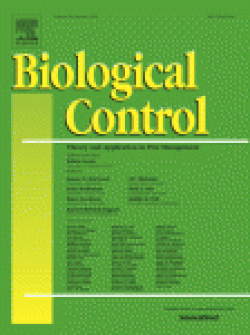 Antifungal effects of compost tea microorganisms on tomato pathogens January 2015 Biological Control Link Here Canadian researchers wanted to know if compost tea had any effect on the disease causing fungi, Botrytis and Alternaria. The fungal pathogens are known pests on tomato farms and cause a significant amount of loss to the high dollar crop. To test tea's effects on tomatoes, the scientists brewed up a compost tea that was derived from sheep manure compost. They used a series of laboratory techniques to isolate individual species of microbes in the tea. Then they grew those individual species on petri dishes that also had Botrytis and Alternaria fungal spores growing on them. The scientists looked for the petri dishes of bacteria that inhibited the growth of the fungal spores most effectively. They found the most anti-fungal strains were Bacillus subtilis and Brevibacterium linens. The scientists then took these two beneficial bacteria and tested how they protected actual tomatoes from fungal infection. To do this, they injected tomatoes with both the beneficial bacteria and the disease causing fungus. They did this two ways: the bacteria before the fungus, and the fungus before the bacteria. The reason for the two scenarios was because they wanted to see if there was a preventative aspect to applying the beneficial microbes prior to the introduction of the fungus. They also wanted to see if the bacteria worked better as singular isolates, or if they were more effective when they worked as a pair. The infected tomatoes were then incubated in a warm and moist environment, allowing the bacteria and fungus to do battle. The control group were tomatoes infected with fungus, but given no protective bacteria. At the end of the incubation time the researchers measured the size of the lesions produced by the pestilent fungus. The tomatoes that were treated with the beneficial bacteria prior to fungal infection were in significantly better shape than the ones that were treated after infection. This supports the idea that an ounce of prevention is worth pounds of cure. The research also found that the tomatoes that had both strains of beneficial bacteria were well better off than the tomatoes that were inoculated with only one strain. This lead the scientists to suggest that there is a synergistic effect between the two microbes that act together to suppress fungal growth. This support's TeaLAB's hypothesis that a bio-diverse compost tea is the most beneficial to the garden. The take away message is that compost tea helps reduce disease. It's a low cost, environmentally friendly way to keep a happy garden. Thanks Canadian scientists! 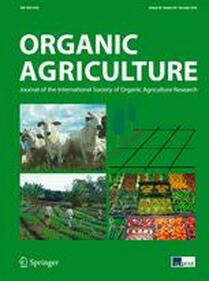 Utilization of compost tea for biochemical response assessment associated with resistance to phytopathogen causing leaf spot in Melicope ptelefoli October 2018 Organic Agriculture Link Here Malaysia's warm temperatures and wet climate create almost greenhouse like conditions that can be great for growing plants, but also great for culturing plant-disease causing fungi. Researchers from Malaysia's University of Technology wanted to determine what affect compost tea had on the growth of the leaf spot causing Grammothele lineata. The test plant was the Asian herb Melicope ptelefolia which is known for it's edible and medicinal qualities. Researchers used two types of teas in the experiment, both were aerated, one of which was supplemented with Molasses. The researchers then made several concentrations of the tea and dipped leaf leaves into it. The leaves were then sprayed with a solution that contained the Grammothele spores. The infected leaves were incubated for a week and then the severity of infection was documented. The leaves were also tested for the amount of naturally occurring plant defense chemicals present in their tissue. What they found was that both teas (with and without molasses) inhibited the growth of the fungal disease by up to 78%. The highest concentration (40% tea by volume) of molasses brewed tea was the most effective. The control leaf, which was sprayed with spores only, was completely infected. Moreover, the leaves that had tea applied to them produced more natural plant defense chemicals (Peroxidase and Polyphenol Oxidase). The tea boosted the plants own ability to fight off disease. This is an impressive new discovery in the compost tea realm, as most literature points to compost tea helping reduce infection through competitive exclusion. This is yet another reason to start using compost tea in your gardens and on your landscape. Thanks Malaysian scientists for furthering our understanding of why this living fertilizer is such a beneficial substance.  Evaluate the effect of compost tea and some chelated micronutrients forms on black cumin productivity January 2019 SN Applied Sciences Link Here The Desert Research Station in Baluza, Egypt had a busy 2018 investigating the efficacy of compost tea on their sandy soils. Research scientists wanted to know what effect compost tea in combination with the chelating agents EDTA and Humic Acid had on the growth of Cumin, a plant valuable as a food and medicine. Chlelators are molecules that hold onto biologically essential micronutrients in such a way that the micronutrients are kept available for plant use. EDTA is a synthetic, slowly to biodegrade chemical that has been shown to have toxic effects on animals, while humic acid is a natural compound that has poses no known risk to natural systems. The scientists had 8 different treatments: Compost Tea Foliar Spray, Compost Tea Soil Drench, EDTA Foliar, EDTA & Compost Tea Foliar, EDTA & Compost Tea Drench, Humic Foliar, Humic & Compost Tea Foliar, and Humic and Compost Tea Drench. The variables that they looked at were: Plant Height, Dry Weight, Weight of Seeds, Oil Percentage, Volatile Oils, and residual Nutrient content in Plants. The 8 treatments were administered twice during the growing season, at 35 and 70 days after seedling emergence. All treatments including the control were fed a conventional fertilizer at recommended rates. The researchers grew some pretty outstanding results. In all treatments there was an increase in all measured variables, however the highest values were seen in the Compost Tea and Humic Acid Foliar treatment. Plant height, dry weight and weight of seeds, oil percentage and volatile oils were to shown to be maximized by foliar spraying compost tea that included humic acid. The next highest values were generally seen in the Compost Tea and Humic Acid soil drench. Across the board it was clear that compost tea and humic acid are beneficial to plant growth. The researchers conclude that compost tea combined with humic acid provides a significant boost to productivity. Humic acid is a viable, safe, and better alternative to EDTA. A big thank you to the cumin cultivating scientists of Beluza, Egypt. 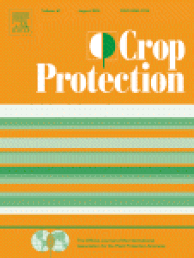 Comparative bioactivity of selected seed extracts from Brazilian Annona species and an acetogenin-based commercial bioinsecticide against Trichoplusia ni and Myzus persicae Crop Protection August 2014 Link Here A group of researchers from Brazil and Canada collaborated on a study compare the effectiveness between seed extracts, a commercial bioinsecticide, and a pyrethrin based insecticide. The seed extracts were made from several species of Annona, also known as pawpaw or sugar apple. The bioinsecticide was acetogenin-based. Acetogenin is naturally found in Annona. Researchers wanted to determine if the seed extract was as effective as the commercial formulation, as compared to the pyrethrin based insecticide with known efficacy. Seed extracts were made by grinding seeds for ripened fruits into a powder. The organic compounds within the powder were extracted with alcohol. The alcohol was then allowed to evaporate, leaving the extracted compounds behind. Those compounds were then applied to insects as either oral ingestion or a topical spray. Researchers found that, or four species tested, the seed extract from Annona mucosa species was the most effective in both cabbage looper and aphid control. Researchers also found that the seed extract of A. mucosa was as effective or better than the commercial bioinsecticide and the pyrethrin based insecticides. A 98% mortality rate was observed in greenhouse trials on Cabbage Loopers that were sprayed with the A. mucosa seed extract, while the control group which was sprayed with the pyrethrin based insecticide displayed a 98.88% mortality. Aphid control showed similar results. The researchers conclude that the seed extracts are a viable option as biorational pesticides for cabbage looper and aphid control. 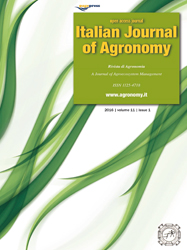 Compost tea spraying increases yield performance of pepper (Capsicum annuum L.) grown in greenhouse under organic farming system Italian Journal of Agronomy August 2018 Link Here Compost Tea is making a name for itself around the world, most recently in a farm town called Eboli in the boot shaped country of Italy. Univeristy researchers wanted to see what affects aerated tea would have on pepper plants when used as a foliar spray. Compost was made from a variety of vegetable wastes and then aerated in water. No food sources were given to the microbes. The tea was then diluted to a 10% solution, and sprayed on foliage weekly during the growth cycle. The trial was done over a two year period in order to have enough data to run meaningful statistics. The Italian researchers found that there was a 21% increase in yield the first year, and a 16% increase in yield the second year. The yield increase was due to an increase in the number of peppers that each plant produced, and not due to a size increase in the fruits. The available nutrition and biologically active compounds produced in the aerated tea were able to increase flower sites and sustain the growth of more peppers. According to this study, Peter Piper would be wise to spray his peppers if he wants to pick more than a peck. And you would be wise to do the same. !Ciao e grazie! 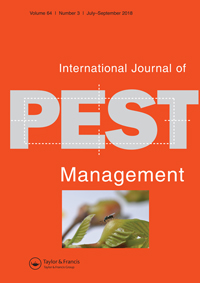 Evaluation of different types of compost tea to control rose powdery mildew (Sphaerotheca pannosa var. rosae) International Journal of Pest Management August 2017 Link Here Those Iranian scientists have done it again, showing aerated compost tea works great as a fungicide, especially at a 1:8 dilution, sprayed twice weekly. A simple experiment was set up on red roses that were infected with powder mildew. The scientists used several combinations of variables: Aerated vs. Non-Aerated tea, Compost versus Vermicompost Tea, Dilution strength 1:8 vs. 1:16, and weekly vs. biweekly sprays. The roses were allowed to grow, and the numbers of infected leaves were counted and used to calculate damage rates. It was found that Aerated Compost Tea sprayed 2 times weekly, at a dilution rate of 1 gallon of tea to 8 gallons of water, was the most effective at suppressing the growth of powdery mildew. This research points us every closer to an exactness we can use to better our day to day gardening experience. Thanks Iranian scientists!!! 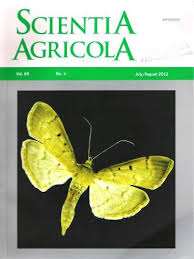 Efficiency of garden waste compost teas on tomato growth and its suppressiveness against soilborne pathogens University of Salamanca/Faculty of Agricultural and Environmental Sciences September 2018 Link Here Compost Tea shows its many strengths once again. Researchers in the agriculturally rich country of Spain performed greenhouse trials on tomatoes with both compost and worm casting teas. The two types of teas were tested for the amount of nutrition present, their affect on fungal pathogens, and their effect on growth. The compost and worm castings were made from the same sources of green waste in order to compare equitably. Tomato were infected with Fusarium, and Rhizoctonia, two well know disease causing fungal pathogens, and the were then watered with one of four dilutions of compost tea. The plants were allowed to grow over a three month season, and then were evaluated for growth characteristics and disease severity. The ardent scientists found that the both types of teas produced excellent results. The evaluation of the teas showed that there were significant amounts of soluble plant fertilizers present, along with several beneficial plant hormones like the ever-important Indole Acetic and Salicylic acids. The severity of the diseases were drastically reduced through the use of compost teas. The vermicompost tea provided better defense against Rhizoctonia, while the compost tea fought off Fusarium most effectively. The tomatoes that received teas also grew much more. This is easily explained by increased amounts of fertilizing and growth promoting substances in the tea, as well the disease suppressing effects.  Effect of Dry Yeast and Compost Tea on Growth and Oil Content of Borago Officinalis Plant Journal of Agriculture and Biological Sciences, 2010 Link Here Borage is a common flower whose oils contain several beneficial substances that are used in natural and modern medicine. A group of scientists in Egypt wanted to see if they could increase Borage's growth and oil content with the aid of dry yeast and compost tea. The experiment was carried out over two years in Giza, Egypt. There were 5 groups of plants tested: (1) plants watered with compost tea, (2) plants foliar sprayed with compost tea, (3) plants foliar sprayed with a liquid solution made from dry yeast and water, (4) plants foliar sprayed with tea and also foliar sprayed with yeast, (5) plants foliar sprayed with yeast and watered with comost tea. The plants were compared to a control group that did not receive tea or yeast, though was fertilized and watered similarly. The Egyptian scientists found that compost tea applications "significantly increased plant height (cm), fresh and dry weight of aerial parts and flowers (g/plant)". Foliar spraying yeast increased "values of fresh weight of aerial parts, number of suckers, seed weight and oil%". In both years, the scientists found that the combination of both watering in compost tea and foliar spraying yeast was the most beneficial. Not only did the plants grow more productively, but the levels of beneficial substances like alpha-linolenic acid and campesterol significantly increased as well. This is the kind of information you take back to the herb garden and share with all your friends. 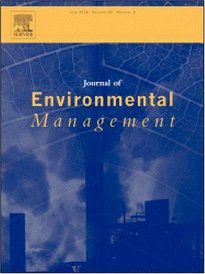 Phosphorus availability from rock phosphate: Combined effect of green waste composting and sulfur addition Journal of Environmental Management November 2016 Link Here Phosphorus is extremely important for plant growth, yet it's use in agriculture is extremely inefficient. A conservative estimate is that 50% of applied phosphorus becomes unavailable as it binds with other elements in the soil. To help alleviate this, we can thank microbes. To address this problem, a team of scientists from Italy and Spain added rock phosphate to greenwaste-compost piles at several levels, let the compost go through its thermophilic cycle, and then determined soluble phosphate levels. The scientists found that soluble phosphorus levels increased with the addition of compost. The increase was most drastic in the treatments that had the lowest amount of rock phosphate added. Furthermore, the addition of rock phosphate made for more efficient use of nitrogen in the compost, retaining it so that it was not lost to the environment. Adding elemental sulfur was also shown to help increase phosphorus solubility. Take home message: add a little soft rock phosphate to your compost pile to create a phosphorus rich biofertilizer. 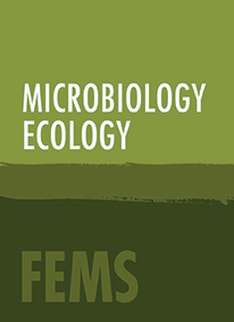 Effects of selected root exudate components on soil bacterial communities Microbiology Ecology September 2011 Link Here Root exudates are substances that plant roots secrete into the rhizosphere, stimulating microbial activity which in turn helps to support a healthy soil system and productive garden. The exudates are composed of a mixture of compounds each with its own unique properties. A group of scientists from New Zealand wanted to know which of the exudate-constituents affected microbial growth the most. They did this by selecting six of the most common root exudate components: sugars (a mixture of fructose, glucose, sucrose), lactic acid, maleic acid, and quinic acid. With these ingredients, five artificial exudates were concocted to make treatments: sugars, sugars+all acids, sugars+individual acids). The artificial exudates were then watered into soil over a 14 day period. After the 14 days, microbial activity was measured (microbial activity can be measured in bulk, it gives us a good idea of population size). Also, the numbers of species (or diversity) in each treatment was quantified. The scientists found that the most effective recipe to promote microbial activity was the combination of sugars and lactic acid. The high level of microbial activity indicates that this treatment had the highest microbial populations. Interestingly, the sugar/lactic acid brew had the lowest diversity. The most diversity was seen in the sugar/maleic acid brew. Even more interestingly...the sugar/maleic acid had the lowest amount of microbial activity. The scientists suppose that the sugar/lactic acid brew enabled the most efficient group of microbes to quickly proliferate, while the sugar/maleic acid caused slower growth which allowed a diversity of bacteria to grow. The combination of sugars and quinic acid, as well as the combination of sugars and all of the acids produced relatively high microbial activity as well as species diversity. Take home message, use a diverse food source for your teas, and you will have a diverse and abundant microbial community. Thanks Kiwis! 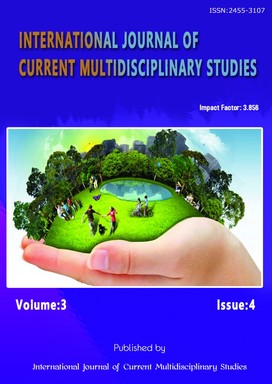 The Effects of Rate and Method of Aerated Compost Tea Application on Yield and Yield component of Tomato (Lycopersicon esculentum Mill.) at Burusa, South Western Ethiopia. January 2018 International Journal of Multidisciplinary and Current Research Link Here A group of scientists in Ethiopia wanted to see whether or not compost tea would help improve tomato production. Local farmers are trying to avoid using chemical fertilizers due to economic and environmental costs. Compost tea is a low cost alternative worth investigating. The scientists and farmers worked together, potting up Roma tomatoes into several groups that each received a different amount of compost tea. The first group received none, and the other four were watered or foliar sprayed weekly with 300, 600, 900, and 1200mililiters of tea. The plants received standard care otherwise. Several parameters were studied during the experiment, including: plant height, number of primary branches, root length, days to flower initiation, days to first harvest, number of fruit per plant, fruit weight, fruit size, and fruit quality. It was shown that across the board, compost tea was significantly beneficial. Compost tea helped to grow bigger plants that produced more, larger, higher quality fruit, that were able to be harvested sooner. The total marketable yield of tomatoes was 0.6kg per plant for the control group, and 2.4kg/plant in the high application rate group. That is a four-fold increase in tomatoes to market. That kind of increase in production could lead to improving the lives of thousands of people. Thanks compost tea! (the Materials and Methods section in this paper is worth the read, click the Link Here to learn more)  Properties of vermicompost aqueous extracts prepared under different conditions Journal of Environmental Technology August 2016 Link Here Have you ever wondered why aerating your tea makes all the difference? Well a group of scientists from the Czech University of Life Sciences did. They too their wonder and turned it into a science experiment. The curious life scientists wanted to see the difference in plant available nutrients in aerated vs. non-aerated teas. To do this, they tested two different vermicomposts, one made with grape pomice, the other horse manure. The composts were placed in buckets and were either aerated or just stirred. The scientists then sampled the brew every 6 hours and tested the tea for: pH, EC, N, P, K Ca, Mg, and a couple of other parameters. They then used statistics to compare the numbers. Their findings were remarkable. All macronutrient levels increased in the aerated teas. Available nitrates levels more than quadrupled. Phosphorus and Calcium increased by one third. Potassium and Magnesium doubled. Interestingly, the majority of the nutrients were made available in the first 6 hours, having reached their maximum at 48 hours. The reasons for these nutrients becoming available is attributed to oxidation reactions occurring in the aerated water, as well as microbial forces acting on the compost material. This study helps us to identify yet another source of compost tea's goodness. Thanks science!!! 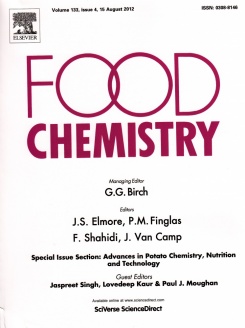 Metabolomics for organic food authentication: Results from a long-term field study in carrots Food Chemistry January 2018 Link Here A groundbreaking study done by a group of international scientists working out of Belgium has shown that organic produce is identifiable through DNA testing. An area of study called Metabolomics has made this possible. Metabolomics studies the chemical fingerprints left by specific cellular processes. By looking at what chemicals are left in a cell, scientists are able to determine what has occurred in that cell. Because plants utilize different metabolic pathways depending on their growth conditions, scientists can look for specific metabolites that indicate organic or synthetic fertilizer sources. The actual process involves identifying and quantifying specific mRNA and proteins, then running that information through statistical analysis to determine if the fertilizer source. In this study on carrots, if researchers knew the harvest year, they were able to identify with 100% accuracy whether or not the root vegetables were of organic origin. If they did not know the harvest year, the success rate was 70-100%. This study will help to ensure there is no counterfeit produce in the organic section at the market. More importantly, it shows that organic produce is technically different than synthetically grown produce. The residual metabolites found in organic produce could be valuable compounds leading to greater health in those that consume them. This study has many implications, we look forward to learning about all of them. 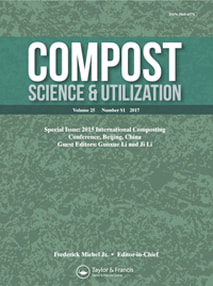 The Effects of Soil Solarization and Compost on Soil Suppressiveness against Fusarium Oxysporum f. sp. Melonis Compost Science and Utilization March 2017 Link Here Soil Solarization is a common low-cost process used to kill soil borne pests and pathogens. Soil is cultivated, moistened, and covered with clear plastic during hot summer months. The plastic covering collects heat from the sun, which is dissipated throughout the moist soil. The soil can heat to above 140F, killing disease causing organisms. Beneficial organisms have adapted to be able to withstand this heat. There are some issues, like whether or not the soil is able to get hot enough to actually do the job. In northern latitudes and coastal climates, the daytime temperatures may not suffice, which can actually exacerbate the problem. The A group of scientists in Jerusalem wanted to know if compost could help the process. In a simple experiment, melon seedlings were inoculated with fusarium spores and then planted in several soil conditions: non-solarized soil, solarized soil without compost, and solarized soil with compost. Interestingly, the researchers found the compost with non-solarized soil, provided the best resistance to fusarium. Compost with solarized soil was also beneficial. Since the melon seedlings were certainly exposed to the pathogen, the scientists concluded that solarization actually may be decreasing the microbial biomass enough so much that fusarium was able to become the dominant organism. With the addition of compost, the load of beneficial organisms was able to keep the fusarium in check, thereby reducing the disease occurrence. The take home lesson from this experiment is: if you solarize your soil, add compost in order to maintain a healthy population of beneficial microorganisms.  Biochar accelerates PAHs biodegradation in petroleum-polluted soil by biostimulation strategy Journal of Hazardous Materials February 2018 Link Here Pollution is a pretty big problem worldwide, especially in China. Years of lax regulation has created land, water, and air that are far from optimal when it comes to plant and human health. Remediation of theses polluted natural resources is of a growing concern for both public health and future economics. A group of scientists from the Shijiazhuang University in Hebei, China wanted to see what effect biochar has on helping petroleum polluted soils. Specifically, they looked at biochar made with either sawdust or wheat straw, cooked at either 300C or 500C, and their effect on reducing Polycyclic Aromatic Hdyrocarbons (aka PHAs). The biologically-minded scientists found that the addition of biochar helped to reduce soil PAH content, though only significantly so with the biochar produced under the hotter, 500C preparation. There was no difference in results between sawdust of wheat straw. Laboratory analysis showed that the addition of biochar actually promoted the growth of PAH degrading bacteria. The experiment showed that the high-heat biochar established favorable soil conditions for microorganisms able to degrade the toxic PAHs. Studies like this show that biochar is likely to play a major role in soil remediation worldwide. 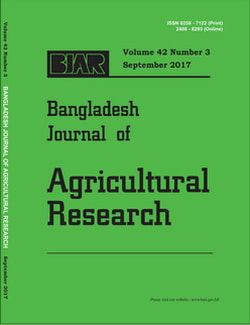 EFFECT OF COMPOST TEA, STREPTOMYCIN AND CUPRAVIT IN CONTROLLING BACTERIAL LEAF BLIGHT OF RICE Bangladesh Journal of Agricultural Research September 2017 Link Here Rice is the biggest food crop in Bangledesh, a small country bordering northeast India. A common disease of rice is Bacterial Leaf Blight, caused by the bacteria Xanthomonas oryzae pv. oryzae. One of the common treatments for the disease is Cupravit, a synthetic fungicide that is toxic to people, and other mammals like mice and other rodents. Considering mice are food sources for predatory birds and reptiles, applying a synthetic fungicide is detrimental to organisms higher on the food chain. A group of scientists from the Bangladesh Agriculture University want to help, and they want to do it using compost tea. An experiment was set up that compared the effectiveness of Compost Tea, Cupravit, and the common antibiotic Streptomycin. Diseased rice plots were given one of the three treatments, and one plot was left as a control group to be compared against. After 14 days of growth, the presence and severity was of the Bacterial Leaf Blight was assessed. The researchers found that the compost tea was nearly effective as the Cupravit as compared to the control, enough so that the researchers concluded that "The compost tea was highly effective to control bacterial leaf blight (BLB) in rice which could replace the chemical fungicides without any risk to human, animal and environment." By switching from synthetic pesticides to natural and safe ones, we can change our landscape back to one of vigor for lifeforms big and small. 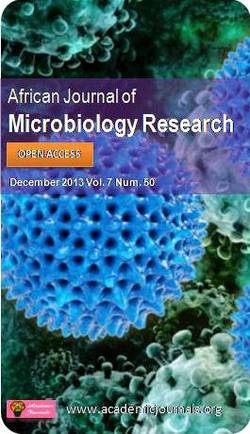 In Vitro Evaluation of Compost Extracts Efficiency as Biocontol Agent of Date Palm Fusarium Wilt African Journal of Microbiology Research August 2017 Link Here In Morocco, Fusarium Wilt is called Bayoud, and a group of researchers want to keep it from wreaking havoc on its date palms industry. To do this, they investigated what affect compost tea extract had on lab grown Fusarium oxysporum albendinis. Researchers used tea extracts from chicken manure compost, and olive mill waste. The finished composts were liquefied, some of which was sterilized and some was not. Then, the researchers applied 5 different concentrations (10-40%) of teas to petri dishes, and then set an actively growing Fusarium colony on the dish. The petri dishes were incubated for eight days. The growth of the Fusarium's mycelium was measured from the center of the colony on outward (the longer the mycelium, the less effective the compost extract). The researchers found that the sterilized tea only worked at the highest concentration, but the non-sterilized tea was EFFECTIVE AT ALL CONCENTRATIONS. Fusarium growth was inhibited from 20%-97% as compared to the control group that had no compost extract applied. The higher concentration of tea, the less the Fusarium was able to grow. Considering the low cost of compost tea, this research is great information for any small farmer looking to become more efficient, while also being eco-friendly. Thanks Morocco!!!  Effects of molasses and compost tea as foliar spray on water spinach (Ipomoea aquatica) in aquaponics system International Journal of Fisheries and Aquatic Studies 2017 Full Article Here A group of brainy botanists from Bangladesh wondered if they could improve the yield of their water spinach crop by supplementing plants with foliar sprays. The crop is grown in a recirculating hydroponic system using a NFT design (Nutrient Film Technique) which flows shallow water over the plant's root. The effluent of is then returned to a reservoir which contains fish, in this case tilapia. The fish's waste becomes plant food through a microbial process called nitrification. There are limitations to growing certain plants aquaponically, as the nutrient levels must remain low enough to ensure the health of the fish. The use of supplemental foliar sprays is used to introduce essential nutrients that might be in limited supply. The scientists in this case wanted to see if there was benefit to using a simple aerated compost tea. In the experiment, they sprayed spinach with either aerated compost tea, a molasses solution, or just plain water. They found that the spinach grown with the compost tea spray was significantly heavier than spinach grown with the molasses spray, and well more so than the spinach sprayed only with water. The experiment showed that compost tea has a place in emerging aquaponic technology.  Effects of Soil Quality Enhancement on Pollinator-Plant Interactions August 2012 Psyche Journal of Entomology Link Here A group of noteworthy scientists in North Carolina has shown that vermicompost helps pollinators do their thing. A trial was set up with Boston Pickler cucumbers (Cucumis sativus) grown in a commercially available potting soil, one set of plants was amended with vermicompost (at 1/3 volume) and one without (fed synthetic nutrients). The radical researchers then watched how bumblebees (Bombus impatiens) responded to the two different sets of plants. It turns out, plants amended with vermicompost: 1. Increased visit length of the bumblebees (tastier nectar?) 2. Reduced time to first discovery (more fragrant flowers?) 3. Bumblebees that fed on vermicompost amended flowers had larger ovaries (indicates higher nutrition quality in pollen) 4. Pollen from the vermicompost grown flowers had higher protein content. 5. Sugar content in the nectar of vermicompost fed flowers was slightly higher. These results indicate that not only does using vermicompost produce higher quality plants, but also helps to increase the health and activity of our precious pollinators. You can do your part by using vermicompost/worm castings in your garden through amending soil or by using it as part of your compost tea recipe. If the worms only knew how important they are. 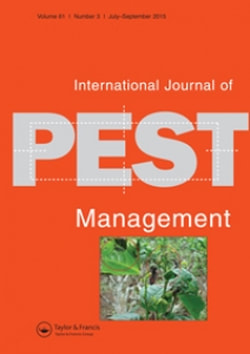 Evaluation of different types of compost tea to control rose powdery mildew (Sphaerotheca pannosa var. rosae) International Journal of Pest Management August 2017 Link Here Fresh compost tea data out of Iran! A group of sagacious scientists evaluated several different types of compost tea and its effects on rose powdery mildew. They made 4 different types of tea: 1. Aerated Compost Tea 2. Non-Aerated Compost Tea 3. Aerated Worm Casting Tea 4. Non-Aerated Worm Casting Tea. They made these teas at two different strengths, a 1:8 and a 1:16 ratio of compost/castings to water. The teas were either bubbled or non-bubbled for 10 days, and then used as a foliar spray on greenhouse grown roses that were susceptible to powdery mildew. Sprays were either made once per week, or every three days. The scientists found that the 1:8 strength Aerated Compost Tea sprayed twice weekly, was the effective in controlling the powdery mildew. More proof that compost tea is well worth the effort if you are working to prevent and eradicate the deleterious effects of powdery mildew. Thanks scientists from the other side of the globe!!! |
Archives
June 2024
Categories
All
|
Contact Us
Why TeaLAB?TeaLAB is committed to helping people and their gardens to become more self- sufficient, healthier, and productive. Grow your sweetest corn, your biggest watermelon, your tallest quinoa, your tastiest tomato, and your happiest you.
TeaLAB was founded to teach people how to garden organically, so that we can become more closely connected with the land. Our goal has been to simplify growing methods so that gardeners have a positive experience in the garden. TeaLAB is where the garden meets the laboratory. From around the world and into your backyard, our products contain ingredients that are sourced both locally and globally. Using methods both ancient and cutting edge, TeaLAB promotes maximum biology. Grow with TeaLAB. |

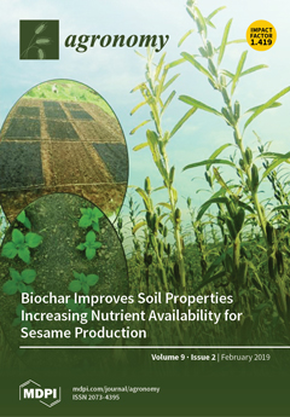

 RSS Feed
RSS Feed
